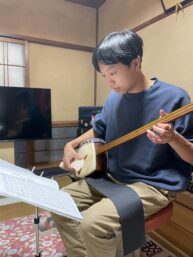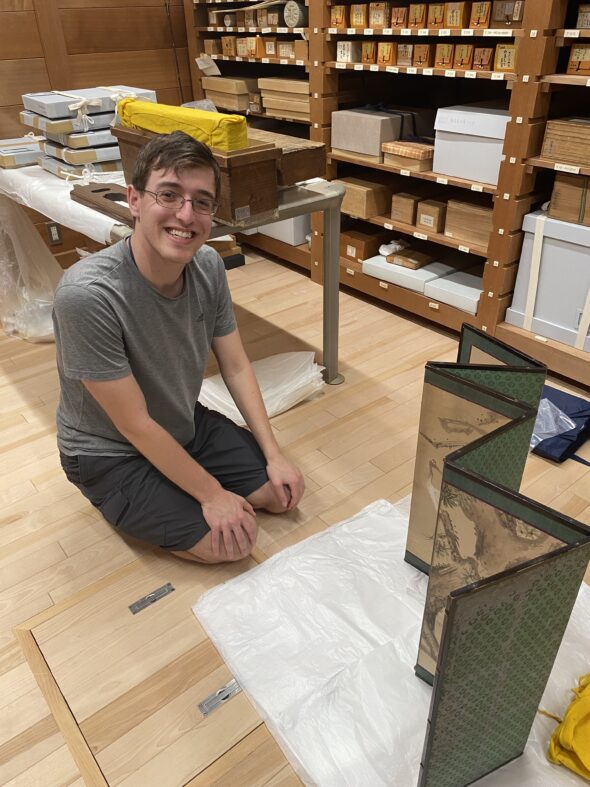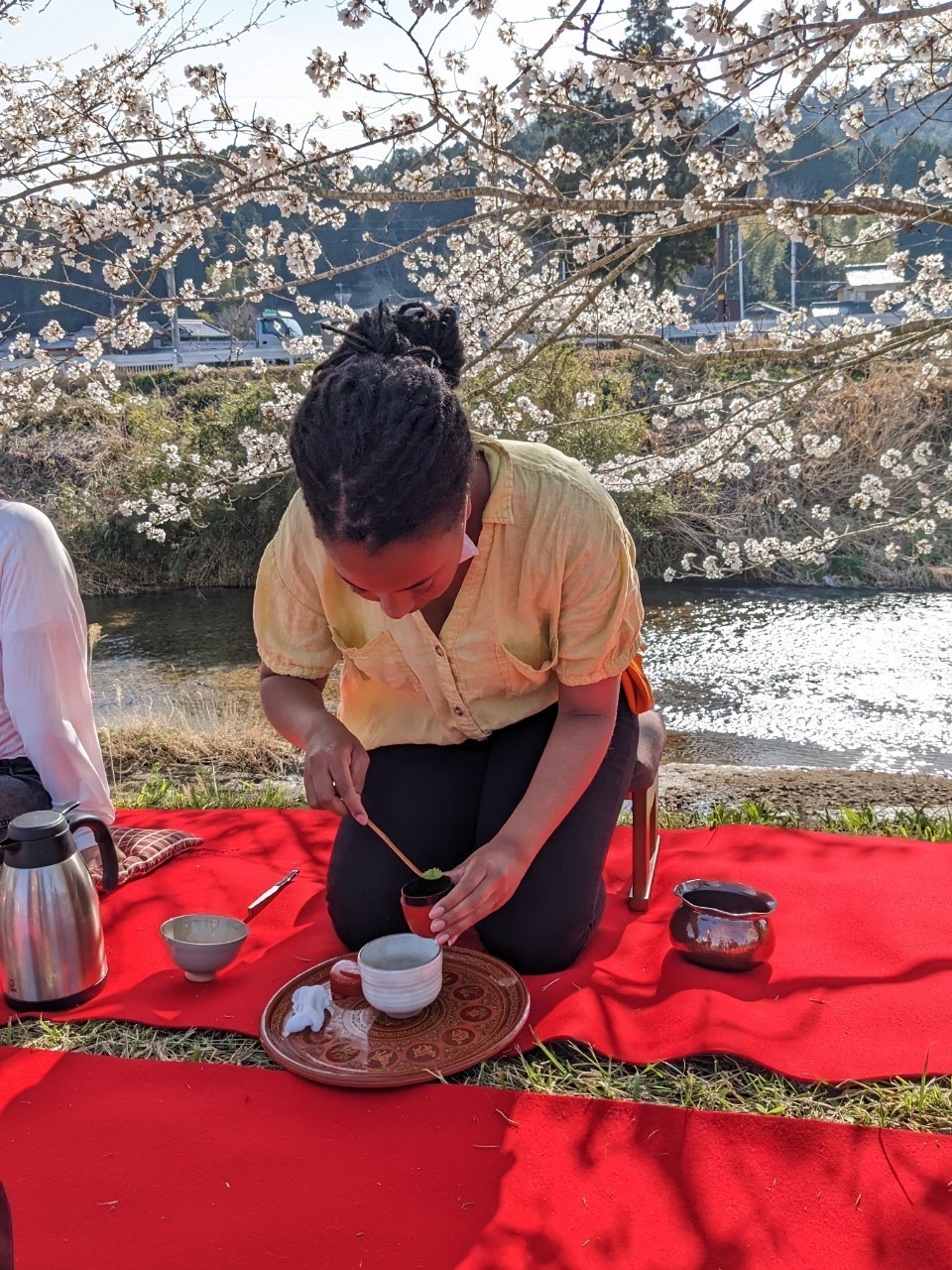My CIP activity is Ikebana–the Japanese art of flower arrangement, also known as kadō.

I’m taking lessons at Kado Enshu, a school which has locations in Marutamachi (group lessons), and Kitaoji (private lessons). A typical Ikebana lesson for me lasts around 1.5 hours, and consists of arranging my flowers (almost always in upright , moribana style), with some suggestions from Sensei throughout the process, and then with some final tweaking from Sensei.
Here, I want to share the pros and cons of taking Ikebana lessons, as well as some advice:
Firstly, Ikebana is definitely one of the pricier CIP choices! I paid 30,000 yen (around $200 USD circa 2024) for 8 lessons per month. On top of this, I also paid a 2500 yen annual membership fee, and maybe around 30 USD for a kenzan and flower scissors. KCJS is able to cover a portion of these fees, but there will still be a sizeable portion (well over $100 USD) left to pay. I believe that these prices are on the cheaper side as well!
Next, is the fact that you’re not going to get a lot of Japanese practice in–you’ll be silently arranging your flowers for the bulk of the session, and this is very much a solitary activity. This is especially true for me , since my Sensei speaks fluent English, so he often just spoke to me in English. If language immersion is a priority for you, I’d recommend something like volunteering with children.
Finally, like any traditional Japanese craft, Ikebana requires a lot of patience, and I ended up progressing slower than I expected. So, don’t expect to progress too rapidly, since it’s an art that’s meant to be perfected over one’s lifetime. Make sure that you’re sufficiently interested in Ikebana to be willing to do the same style of arrangements for pretty much 2 months straight!
If you’d like to pursue Ikebana, I highly suggest purchasing at least your own kenzan and scissors. As for the Ikebana vase, the actual Ikebana vases are quite expensive (hundreds! shudder), so I just use this random bowl that can fit a kenzan and some water. This way, once you bring your flowers home, rather then sticking them in some random vase, you can re-arrange them yourself at home. Kadou Enshu provides me with kenzan, flower bowls, and flowers while I’m practicing during class, but the only piece of my arrangement that I’m allowed to keep and bring home with me are the actual flowers.
Ultimately, I’m glad that I chose to pursue Ikebana, because it’s something that I wouldn’t have the chance to study in America (at least not without an exorbitant fee), and I would consider this a more transferable skill as far as traditional activites go (unlike something heavily ritualistic and intangible like Sado ), since I can certainly continue to make floral arrangements in the future as well. Also, it’s just a super Zen activity with a beautiful philosophy and history behind it!








